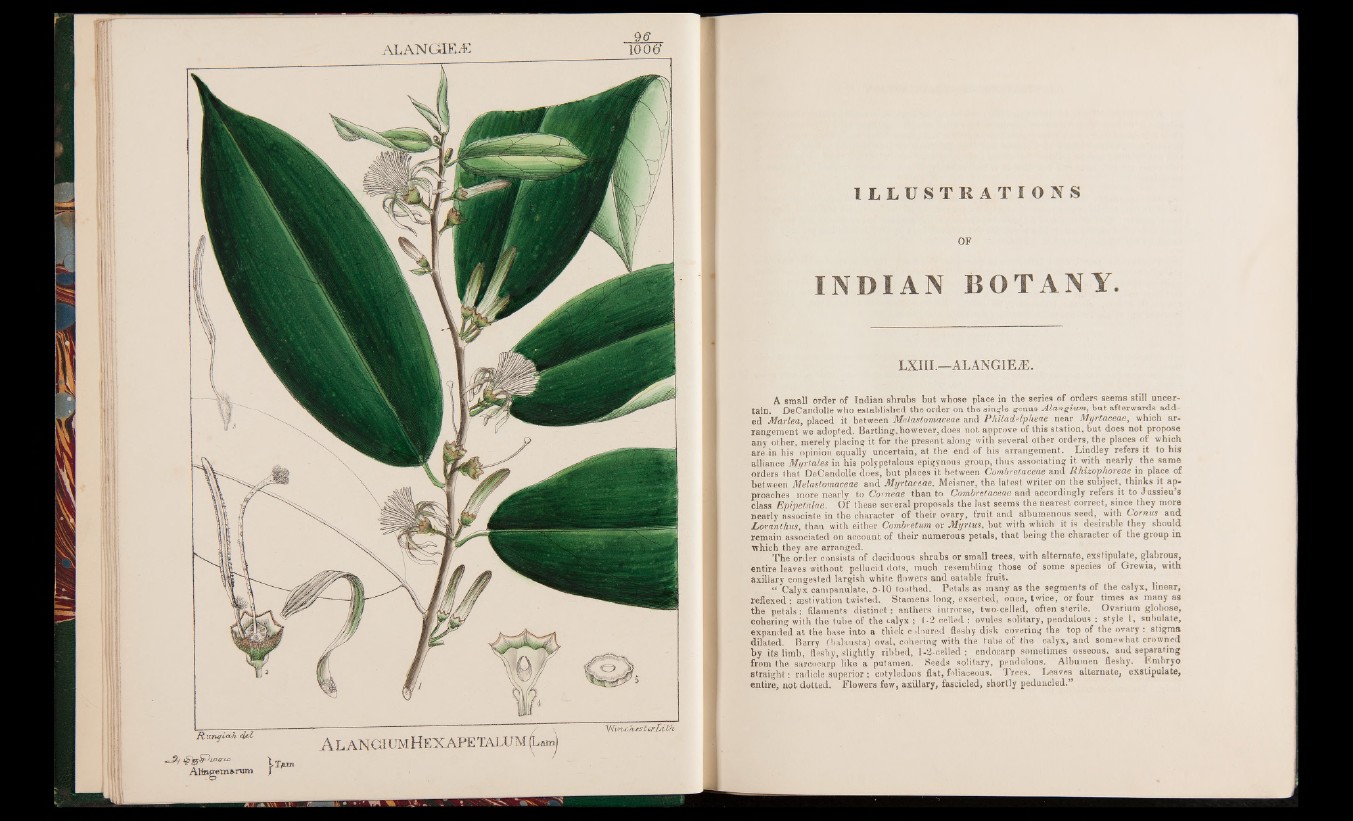
RxunyioJt d d
WmÊÈÈÈÈÊÊk
A h n g em a :
Y dY v cK tstc rL i
ALANGIUMHEXAPETALUM (Lam
L l)u n
Q<? ALAN GÜEÆ 1006’
I L L U S T R A T I O N S
OF
INDIAN BOTANY.
LXIII.—ALANGIEÆ.
A small order of Indian shrubs but whose place in the series of orders seems still uncertain.
DeCandolle who established the order on the single genus Alangium, but afterwards added
Marlea, placed it between Melastoniaceae and P/iiladrfpheae near Myrtaceae, which arrangement
we adopted. Bartling, however, does not approve of this station, but does not propose
any other, merely placing it for the present along with several other orders, the places of which
are in his opinion equally uncertain, at the end of his arrangement. Lindley refers it to his
alliance Mi/rt.ales in his polypetalous epigynous group, thus associating it with nearly the same
orders that DeCandolle does, but places it between Combretaceae and Rhizophoreae in place of
between Melastomaceae and Myrtaceae. Meisner, the latest writer on the subject, thinks it approaches
more nearly to Corneae than to Combretaceae and accordingly refers it to Jussieu s
class Epipetalae. Of these several proposals the last seems the nearest correct, since they more
nearly associate in the character of their ovary, fruit and albumenous seed, with Cornus and
Loranthus, than with either Combretum or Myrtus, but with which it is desirable they should
remain associated on account of their numerous petals, that being the character of the group in
which they are arranged. .
The order consists of deciduous shrubs or small trees, with alternate, exstipulate, glabrous,
entire leaves without pellucid dots, much resembling those of some species of Grewia, with
axillary congested largish white flowers and eatable fruit.
te Calyx campanulate, 5-10 toothed. Petals as many as the segments of the calyx, linear,
reflexed : sestivation twisted. Stamens long, exserted, once, twice, or four times as many as
the petals: filaments distinct: anthers introrse, two-celled, often sterile. Ovarium globose,
cohering with the tube of the calyx ; 1-2 celled : ovules solitary, pendulous : style l, subulate,
expanded at the base into a thick coloured fleshy disk covering the top of the ovary : stigma
dilated. Berry (balausta) oval, cohering with the tube of the calyx, and somewhat crowned
by its limb, fleshy, slightly ribbed, 1-2-celled : endocarp sometimes osseous, and separating
from the sarcocarp like a putamen. Seeds solitary, pendulous. Albumen fleshy. Rmbryo
straight: radicle superior : cotyledons flat, foliaceous. Trees. Leaves alternate, exstipulate,
entire, not dotted. Flowers few, axillary, fascicled, shortly peduncled.”